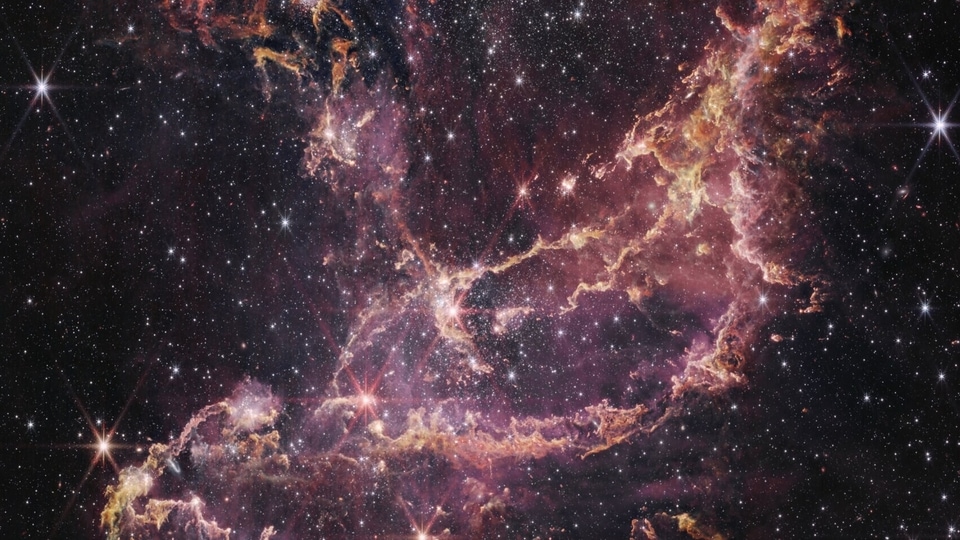James Webb Space Telescope snaps NGC 346 that is 'furiously forming stars'
The new findings from the James Webb Space Telescope is all about solving the mysteries of NGC346, one of the most dynamic star-forming regions in near our Milky Way Galaxy, says ESA.

The universe is full of mysteries. Some are horrifying and some are awesome. To find out what is going on in outer space, NASA and ESA have deployed a number of telescopes and the newest one is the James Webb Space Telescope. Its biggest job is to look back in time to find out about the origin of our universe.
The new findings from the James Webb Space Telescope is all about solving the mysteries of NGC346, which is one of the most dynamic star-forming regions in nearby galaxies. However, the new findings by Webb have made NGC346 a bit less mysterious.
NCG 346 is located in the Small Magellanic Cloud (SMC), a dwarf galaxy close to our Milky Way Galaxy. The SMC contains lower concentrations of elements heavier than hydrogen or helium, which astronomers call metals, than seen in the Milky Way.
“A galaxy during cosmic noon wouldn't have one NGC 346, as the Small Magellanic Cloud does; it would have thousands”, said Margaret Meixner, an astronomer at the Universities Space Research Association and principal investigator of the research team. “But even if NGC 346 is now the one and only massive cluster furiously forming stars in its galaxy, it offers us a great opportunity to probe the conditions that were in place at cosmic noon.”
By observing protostars still in the process of forming, researchers can learn if the star formation process in the SMC is different from what we observe in our own Milky Way. Previous infrared studies of NGC 346 have focused on protostars heavier than about five to eight times the mass of our Sun.
“With Webb, we can probe down to lighter-weight protostars, as small as one tenth of our Sun, to see if their formation process is affected by the lower metal content,” said Olivia Jones of the United Kingdom Astronomy Technology Centre, at the Royal Observatory Edinburgh, a co-investigator on the program.
The research team also has spectroscopic observations from Webb's NIRSpec instrument that they are continuing to analyse. These data are expected to provide new insights into the material accreting onto individual protostars, as well as the environment immediately surrounding the protostars.
Catch all the Latest Tech News, Mobile News, Laptop News, Gaming news, Wearables News , How To News, also keep up with us on Whatsapp channel,Twitter, Facebook, Google News, and Instagram. For our latest videos, subscribe to our YouTube channel.































